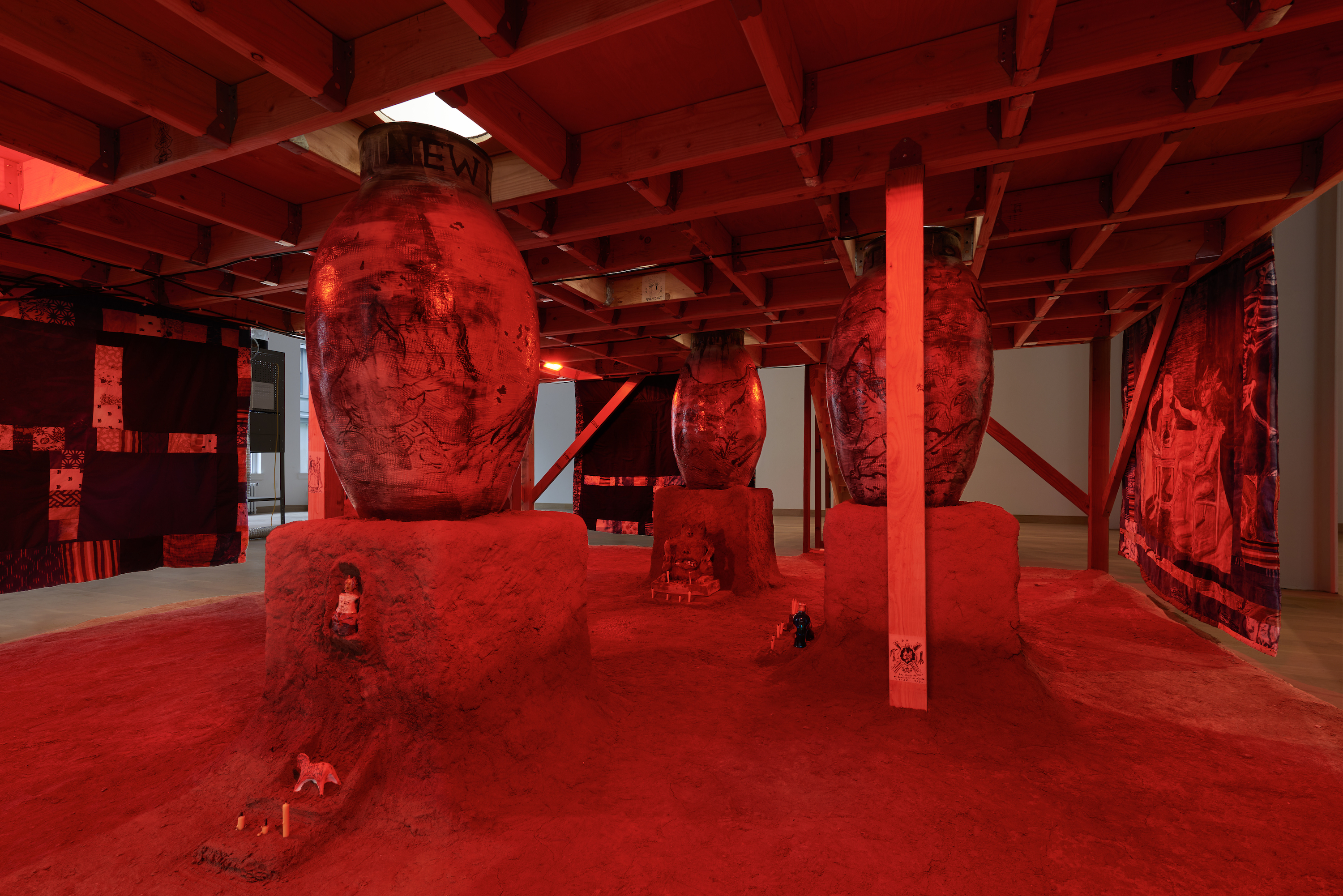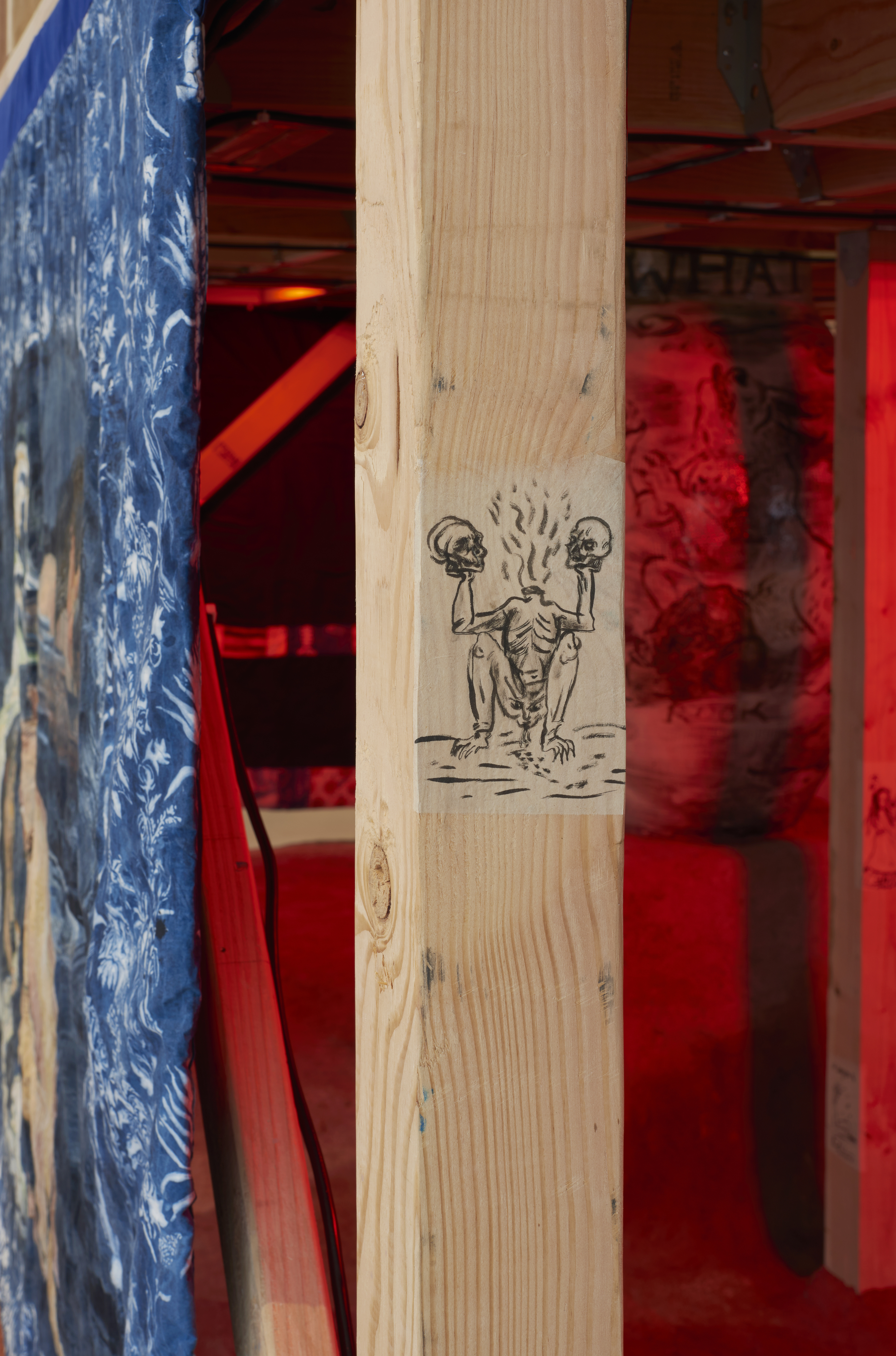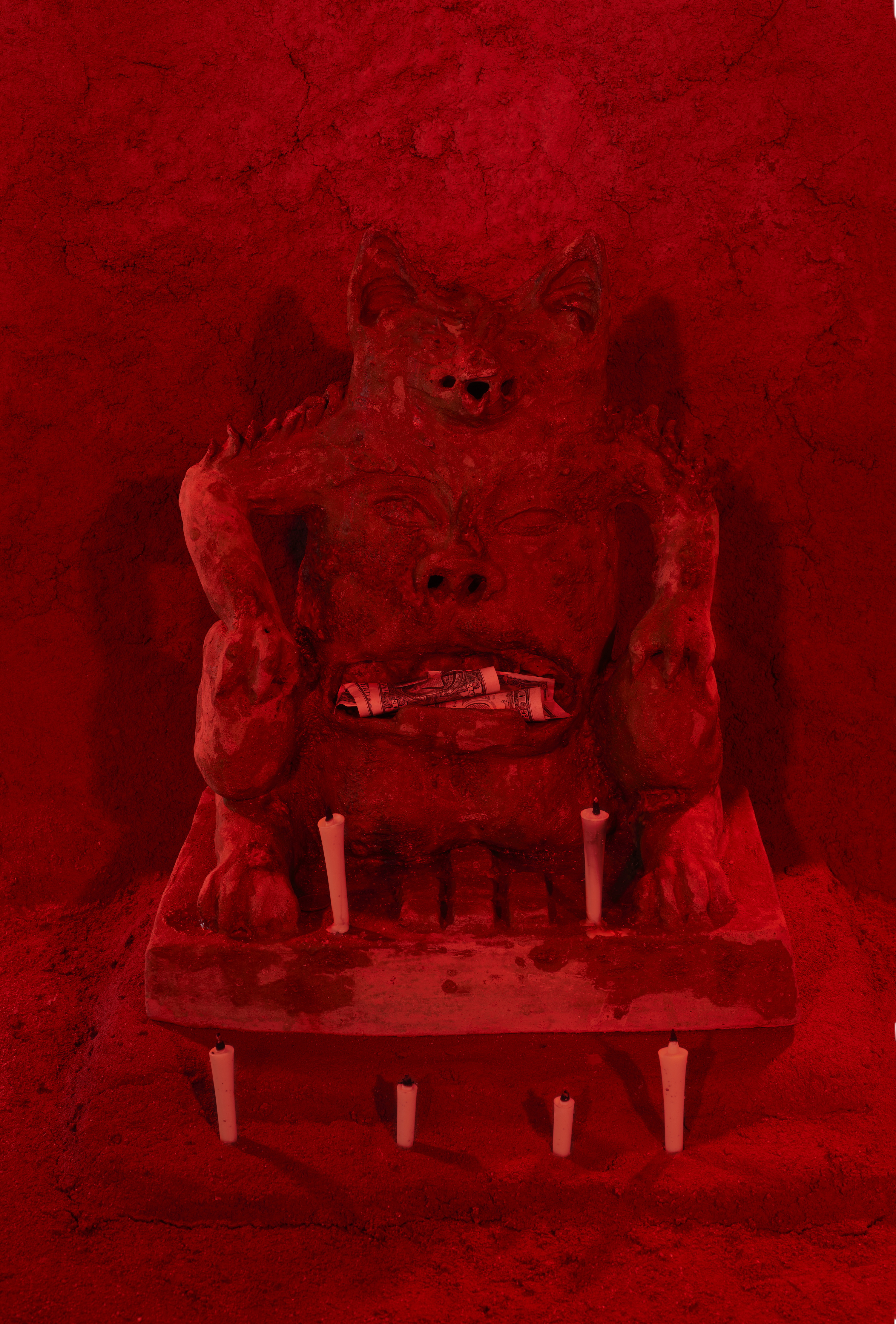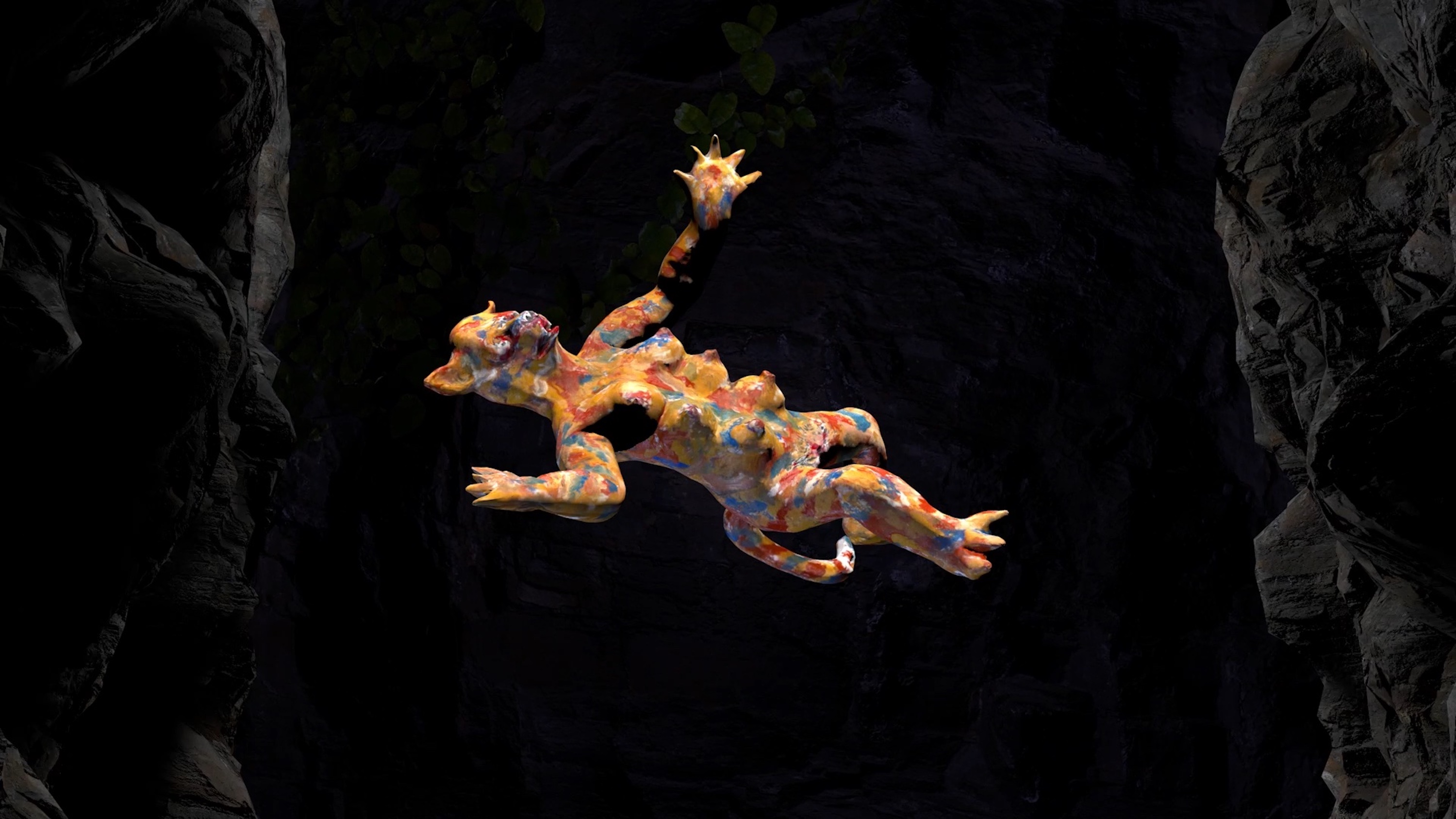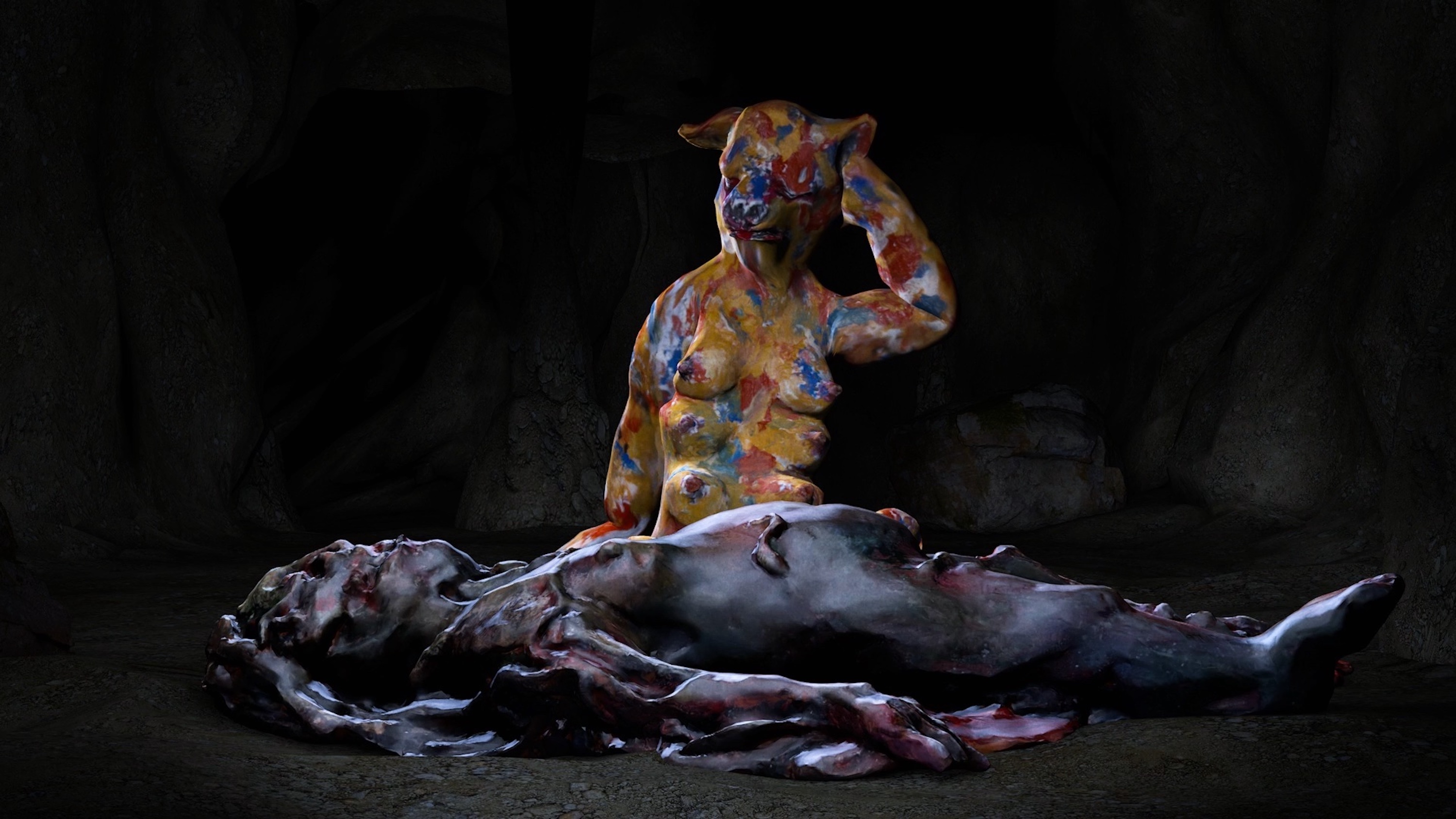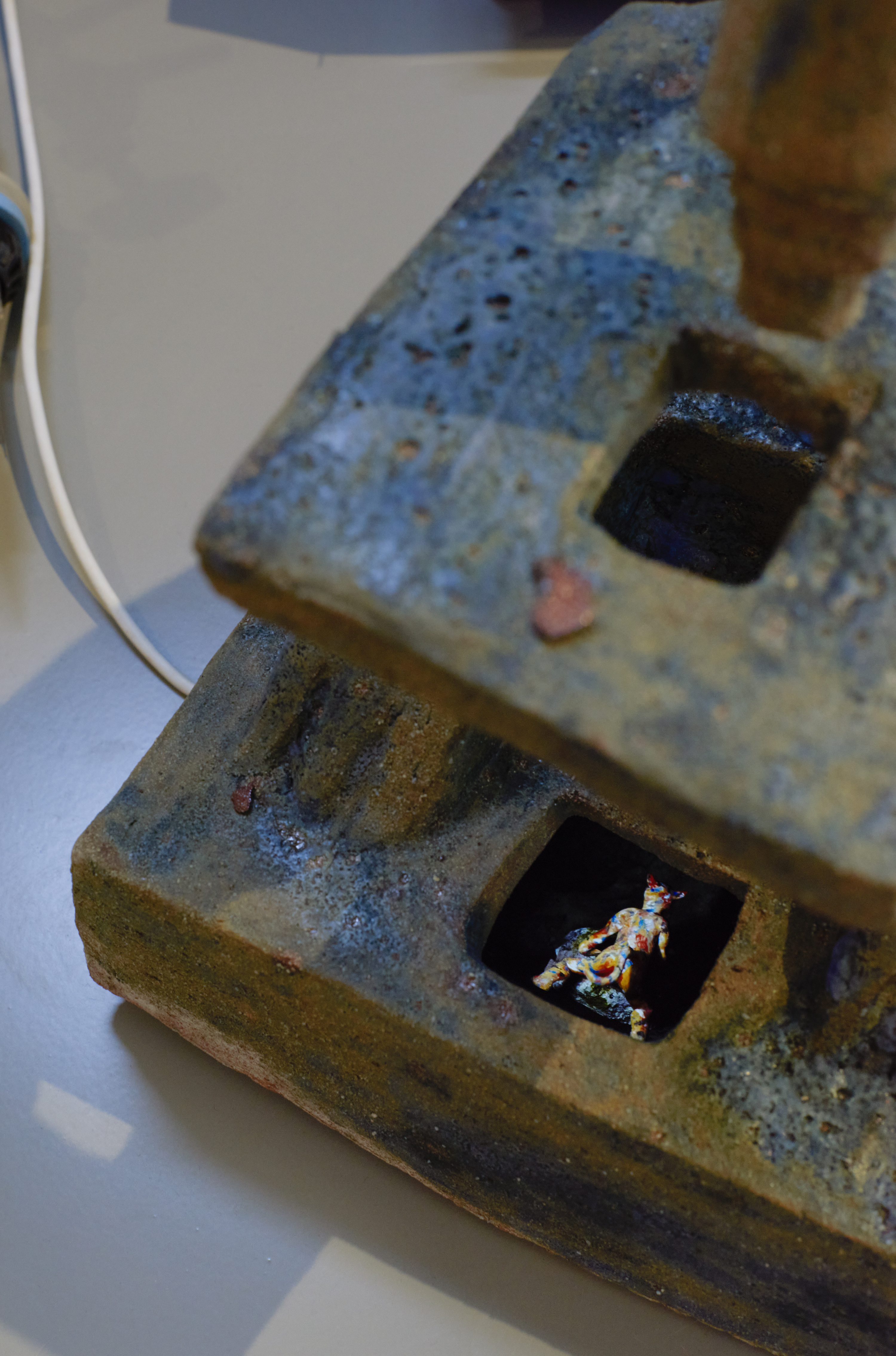September 22–December 16, 2023
The story, as literary theorist Peter Brooks has observed, is today’s dominant cultural form. To Brooks, this “overabundance” of narrative is worrying: he criticizes the deference of virtually all strands of culture (not only literature, TV, and movies but art, museology, and—especially—news media) to the persuasive rhetorical power of the story.1 I share many of his concerns. “The universe is not our stories about the universe,” he writes, “even if those stories are all we have.”2
In the artwork of Candice Lin, however—an artist who nests stories inside stories, who researches, remembers, speculates, and concocts in equal measure, all at once, without hope or intent to persuade—the story becomes a lubricative medium that enables the destabilizing of sense, the de-centering of singular subjectivities, and the unpicking of neatly tied conclusions.
“Lithium Sex Demons in the Factory,” the Los Angeles-based artist’s multimedia exhibition at the non-profit Canal Projects in New York, is near-impossible to summarize, except by telling stories. Let me start with one. In the 1970s, female workers at Japanese-operated factories in rural Malaysia experienced demonic possessions and spirit attacks. Workers at these factories hailed not just from Malaysia but China and India too, so bomohs (Malay shamans) and healers from other respective cultures were enlisted to perform the required exorcisms. This is, apparently, all true: the anthropologist Aihwa Ong wrote a book about it, and noted elsewhere how these possessions frequently took place in the factory bathrooms, places that were upsetting and sinister to many of the workers because of their western-style toilets.3
It was into the stall of one such factory toilet that a catlike sex demon tumbled, via an obsidian tunnel hewed in the wall of a cave, whereupon it was offered a used tampon to smoke by two other half-human, half-animal beings. A jewel-like digital animation, playing on a small monitor in this exhibition, describes the scene.
That bit of the story, while based on genuine Asian mythological beings such as Chinese hungry ghosts (èguǐ), Japanese shit-eating ghosts (gaki), and the Malay penanggal that feasts on menstrual blood, is the invention of Lin. (At Canal Projects, an introductory wall text, as well as a more detailed essay by Sara Garzón, tease out some of the project’s narrative provenance.) The bathroom is not depicted in “Lithium Sex Demons in the Factory,” though excretion is implied throughout. Instead of toilets, the installation is structured around six gray powder-coated industrial workstations, connected by rubber tubes slung between tall ceramic urns and glass jars containing bubbling ferments. Each workstation is also arranged with a mise-en-place of scientific apparatus, found objects, painted ceramics, drawn and found images, Post-it notes, a small LCD video screen and, attached to their reverse sides, a page of printed text. Across these pages runs the exhibition’s central narrative, a story written by Lin that was published online earlier this year by Triple Canopy.4
The narrative, oddly, is a love story: the sex demon comes alive in a cave, ravenously horny, tries to fuck a bloated corpse, but instead bursts it open to find inside a papier-maché model of a silkworm, carrying metal foil tabs which the demon licks and sniffs. It begins to recall its past life in a factory, and feels lovesick for the girls it worked with there. It hurls itself down the chute in search of lost love, and lands in a puddle smelling of “drowned rats and ass” on the toilet floor.
Lin’s writing is lucid and unaffected, and occasionally even funny, but literary merit is not the point of this work. Neither is the technical accomplishment of the animation, even though the six videos which relay this story are just as vividly rendered by collaborator Yotam Menda-Levy. Lin is an artist infatuated by materials and processes. Lithium, for instance, is not only an essential component of the batteries powering our electronic devices, but is also used in certain ceramic glazes. At each workstation, a ceramic computer terminal (in one case a microscope) encases a small video screen. Hands tick around painted porcelain clockfaces, the clay rolled as thin as card but absent numerals, all telling the wrong time. At a couple of workstations, tumblers spin unseen rocks, presumably polishing them into oblivion. To make the big ceramic urns, traditional Korean vessels known as onggi which she painted with mythical beasts, she reportedly traveled to study and collaborate with an onggi master craftsman, Hyangjong Ohwith, living a few hours outside Gwangju, where “Lithium Sex Demons in the Factory” was first exhibited earlier this year at the Gwangju Biennale.
Different—and enhanced—from that first iteration is the raised manager’s office which dominates the space at Canal Projects. Visitors are invited to climb stairs and enter a low-ceilinged, antiseptic room, from which they can observe the workstations below through a one-way mirrored window. Despite its oppressive significance, it is a relatively comfortable spot, except for the liquid which intermittently drips through the ceiling tiles, and the red light and ominous sounds which emanate from below, through round holes cut in the floor. Visitors uneasy associating with the capitalist overseers can explore underneath the office instead: set on a sandy clay floor, more onggi contain speakers, and small shrines are decorated with candles and bottles of potions.
All around are fabric banners, painted by Lin with mythological scenes which may or may not correspond to events in the sex demon story. It may not matter. By this point, most viewers will probably have begun putting together their own stories anyway. One common critique of the narrative form is that it tends towards closure or conclusion, which is an inauthentically comforting contrivance. Do you want to know what happens in Lin’s tale? I don’t think it’s a slight to Lin to say that after spending time in her exhibition, I didn’t really care. In fact, as written, the narrative just peters out. The point of her work is not to deliver an ending, but to create the bubbling conditions in which new and unpredictable meanings can self-generate. Fermentation is not just a motif for her, nor a regional reference, nor even an actual component of her installations, but a metaphor for the methodology through which she realizes her art.
This article was amended on November 14, at the artist's request, to credit collaborators Hyangjong Ohwith and Yotam Menda-Levy by name.
Peter Brooks, Seduced by Story: The Use and Abuse of Narrative (New York: New York Review Books, 2022), 26.
Ibid, 14.
See Aihwa Ong, “The Production of Possession: Spirits and the Multinational Corporation in Malaysia,” American Ethnologist, Vol 15, no. 1 (February 1988), 33-34; and Aihwa Ong, Spirits of Resistance and Capitalist Discipline: Factory Women in Malaysia (Albany: State University of New York Press, 1987).
Candice Lin, “My Life as a Lithium Sex Demon,” Triple Canopy (August 28, 2023), https://canopycanopycanopy.com/contents/my-life-as-a-lithium-sex-demon.
